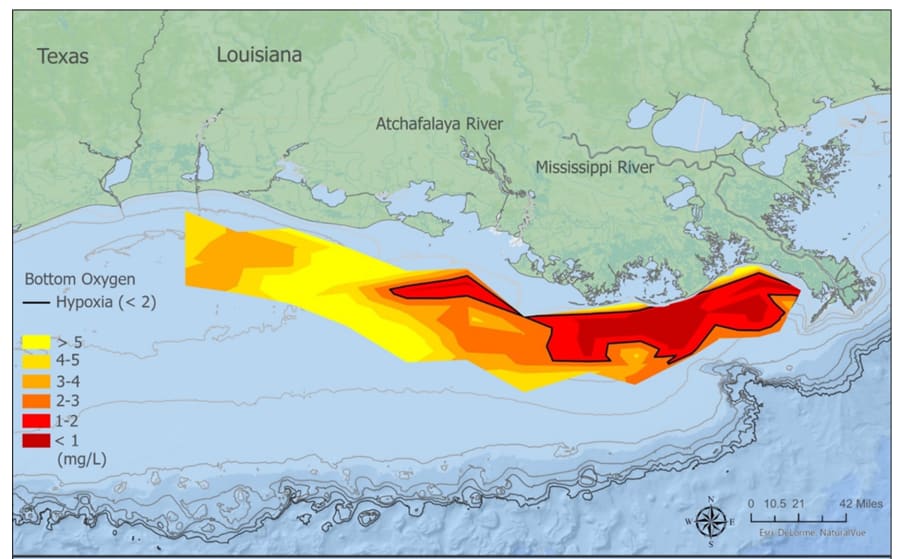JACKSONVILLE, Fla. – Scientists are researching a large “dead zone” in the northern Gulf of Mexico.
Researchers with the National Oceanic and Atmospheric Administration (NOAA) and a consortium of Louisiana universities have been watching this zone for decades, studying its size and impact on marine life and the environment.
What is a ‘Dead Zone’?
A “dead zone” is also known as a hypoxic zone. It is an area of significantly reduced oxygen in a body of water.
This dramatic reduction of oxygen either kills marine life or forces marine life to vacate the area.
This area cannot support marine life and essentially becomes a biological desert.
“Dead zones” can occur naturally, but scientists closely monitor areas that are a result of human activity.
This particular “dead zone” runs just off the southern coast of Louisiana, from near Cameron, La. to the mouth of the Mississippi River.
The Gulf Area
The Gulf of Mexico’s “dead zone” is a result of excess nutrients that are being dumped into the Gulf from the Mississippi River.
These excess nutrients create massive algae blooms during the spring and summer.

The blooms eventually die and sink into the Gulf, and in this process, bacteria help decay the algae and consume vast quantities of oxygen in the Gulf.
This leaves oxygen levels significantly depleted in the zone, forcing marine life to move elsewhere or die.
Monitoring the ‘Dead Zone’
Scientists have been researching and monitoring the Gulf “dead zone” since the mid-1980s.
NOAA also uses computer modeling to estimate the expected size of the zone in the future.
Researchers inspected the zone in late July and concluded the region has shrunk to approximately 3,058 square miles.

While this is good news, it is still a massive area.
NOAA notes this is approximately the size of Yellowstone National Park, or nearly two million acres unavailable for marine life to live.
Why did it shrink?
Scientists strongly correlate the size of the “dead zone” to the discharge of water from the Mississippi River.
The discharge of water from the Mississippi was below the long-term average and also found the salinity of the water in the area to be higher than normal.
This is actually the seventh smallest zone recorded. The largest area was recorded in 2017.
Reducing the Zone Further
Scientists and governments are trying to shrink the area of the “dead zone” even further.
In June of last year, the Environmental Protection Agency announced a $60 million program to fund nutrient reduction efforts.
This includes protecting water quality, supporting fisheries and funding additional nutrient reduction strategies.
These strategies do not include Louisiana, but regions that are in the Mississippi River watershed, such as Iowa and Missouri.
A massive “dead zone” does exist in the Gulf of Mexico. While it is good news the region is shrinking some, more work is ahead to reduce the area further and reclaim a portion of the Gulf for marine life.




